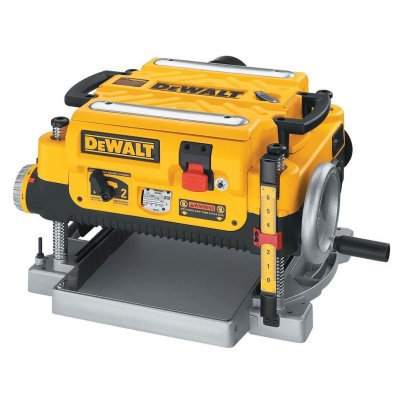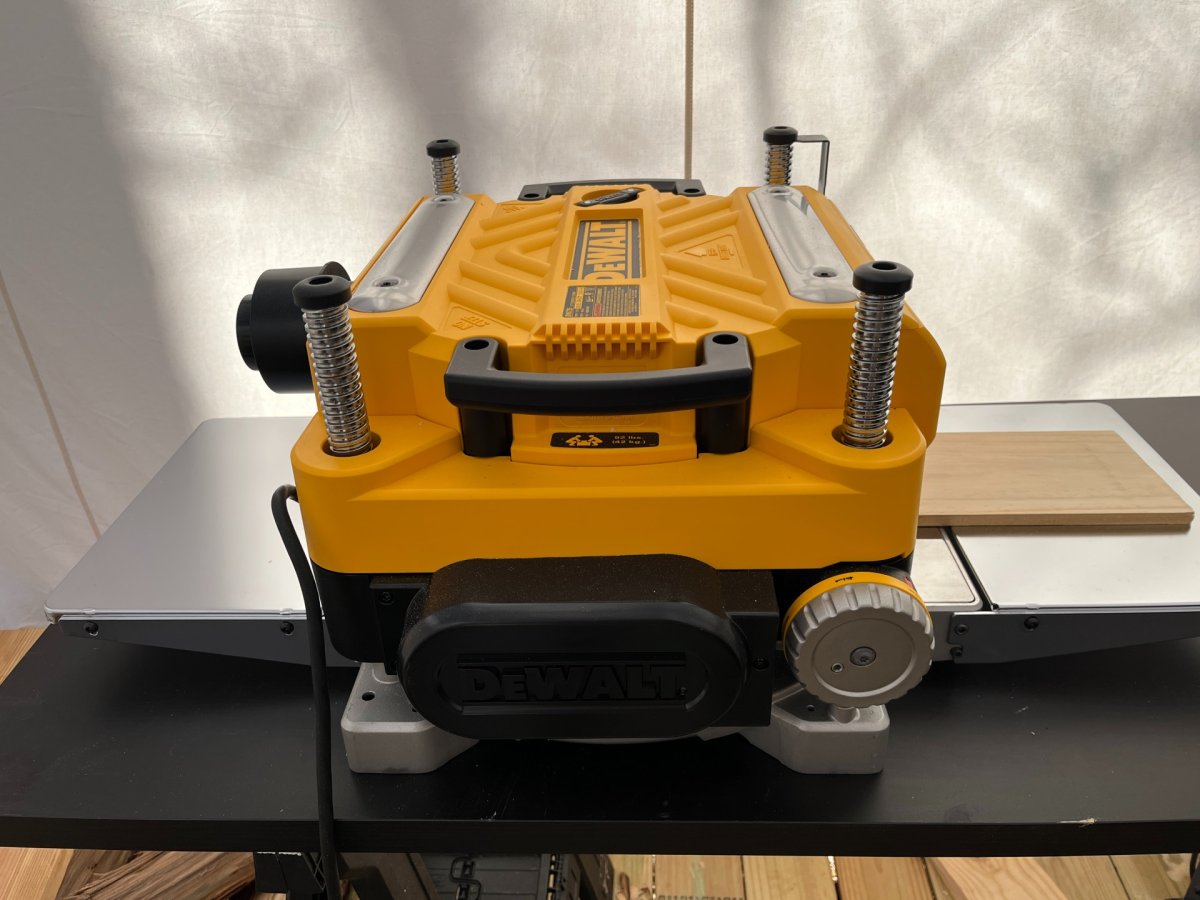

We may earn revenue from the products available on this page and participate in affiliate programs. Learn More ›
A couple of months ago I got the Dewalt 735 Planer to help expedite board prep for woodworking projects. I wanted the flexibility to use wood from a variety of sources, but flattening boards and matching thicknesses has never been my favorite part of a project. Sanded “project” lumber is prohibitively expensive and limited in scope. Hand planing is slow, and router planing requires a clunky jig. After years of workarounds, I finally splurged on the right tool for the job.
As a brand, DeWalt enjoys broad-based customer satisfaction across its array of power tool offerings, and I’ve had positive experiences with the DeWalt jobsite table saw and router I’ve been using the past few years. After initially testing it in combination with a Rikon 8-inch jointer, I’ve been using the 13-inch planer to clean up edge-glued panels, and for dimensioning a couple of log-to-lumber milling projects in my workshop. In this DeWalt planer review, I’ll share my observations after two months using the DeWalt DW735, including the pros and cons that I’ve experienced, and why I’m confident that I made the right choice.
| DeWalt Planer DW735 Specs | |
| Motor | 15-amp |
| Cutterhead | Three-knife, 10,000 RPM |
| Maximum width | 13 inches |
| Maximum thickness | 6 inches |
| Feed rate | Two-speed 196 CPI or 79 CPI |
Testing the DeWalt Planer DW735
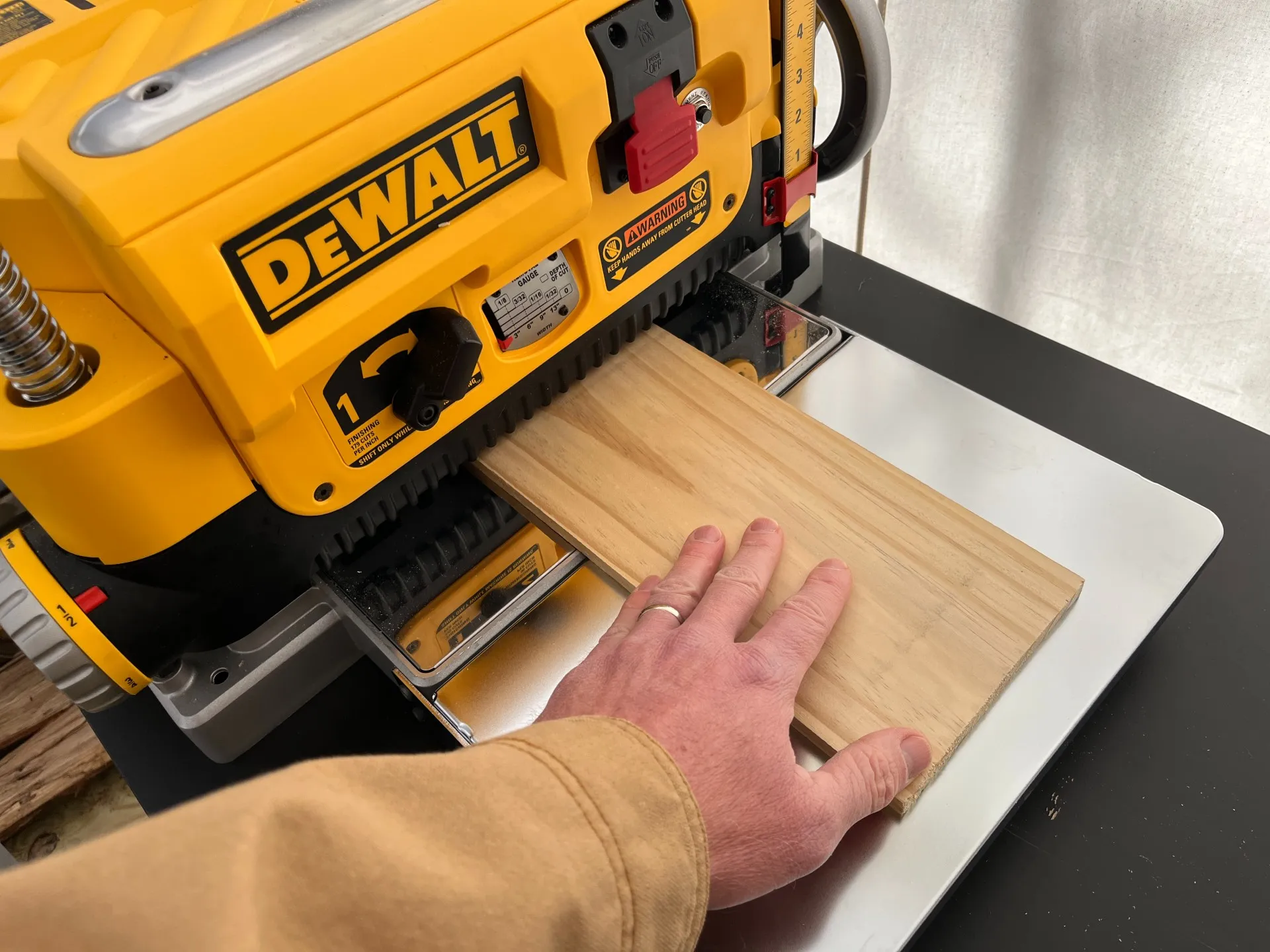
Store-bought lumber is milled within a fairly wide error-tolerance range that can leave woodworking projects looking rough unless you take the time to match the pieces. The usual way to match boards is by using a jointer to remove cupping and warping, which creates one flat face, then planing the other face down to a set thickness. Alternatively, both of these functions can be completed using only a planer with the help of a shop-built planing sled—an effective option for boards that are too wide for the jointer. The planer smooths the surface, but more importantly, it evens out the board thickness while also making it possible to match thicknesses from one board to the next. I’ve tested this planer both ways.
Over the past couple of months I’ve used the DeWalt 735 Planer with and without the jointer as project circumstances have dictated. I used it while preparing boards for glue-ups, and for final surfacing after gluing. When I wanted to make lumber from an oak log, I used a sled with the planer to flatten the surfaces, then matched thicknesses of the rough-cut boards. I’ve logged about 12 hours on the planer so far, which has been enough time to know that this is exactly the tool I was looking for and that I’m glad I fought the urge to buy a cheaper model. The heavy build and powerful motor give it ample stability and steady cutting power. The thickness selector makes it easy to avoid over-planing while precisely matching boards, and the finished pieces come out with very little snipe or chip-out.
| What We Like | What We Don’t Like |
| Automatic carriage lock | Larger than other bench planers, very heavy |
| Fan-assisted dust port with impeller | Requires dust collection add-ons |
| Material removal gauge for quick set up | |
| Heavy-duty height adjustment system |
Helpful Features Boost Productivity and Minimize Mistakes
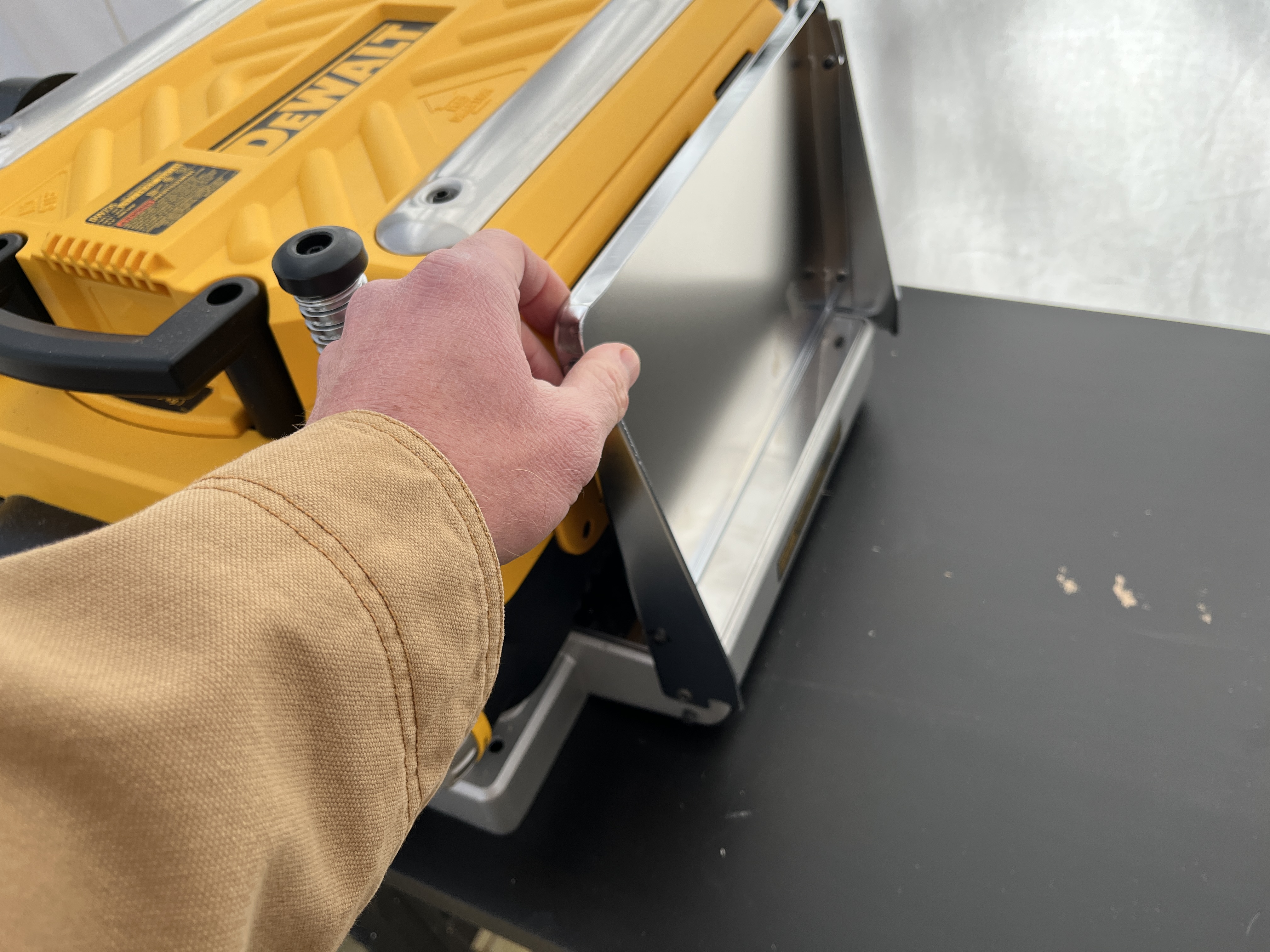
This model has been around long enough to become “exhibit A” when woodworkers need a point of reference with regard to thickness planers. It accepts workpieces up to 13 inches wide and 6 inches thick, and is capable of removing up to ⅛ inch layers per pass. Powered by a 15 amp motor, the cutter rotates at 10,000 revolutions per minute (RPM), while the two-speed rollers feed at either 14 or 26 feet per minute. The three-knife cutterhead extends production time between blade replacements up to 30 percent compared to 2-knife models. The two-speed gearbox allows the operator to choose either faster planing at 79 cuts per inch (CPI) or a smoother finish at 196 CPI.
A few key features set DW735 apart from other planers on the market. First off, it weighs a hefty 92 pounds, which is up to 40 pounds heavier than other popular models. The extra weight hints at better-than-average durability, and more importantly the weight boosts working stability. Another unique feature that I haven’t seen anywhere else is the fan-assisted dust port. Unlike other planers that require an external dust collection vacuum to pull the chips away, this machine is equipped with an impeller and fan that grinds up the shavings and blows them out—all the way across the shop, if not attached to a collection bag.
One of the handiest features is the material removal gauge. It helps when setting up the first pass on a face-jointed rough board. I can place the board beneath the spring-loaded gauge and crank the carriage down until the gauge needle indicates the amount of material I want to remove, then turn on the motor and plane as normal. The planer also has several automatic thickness settings that, when selected, will prevent accidentally making the board too thin.
Hard to Lift, Easy to Operate
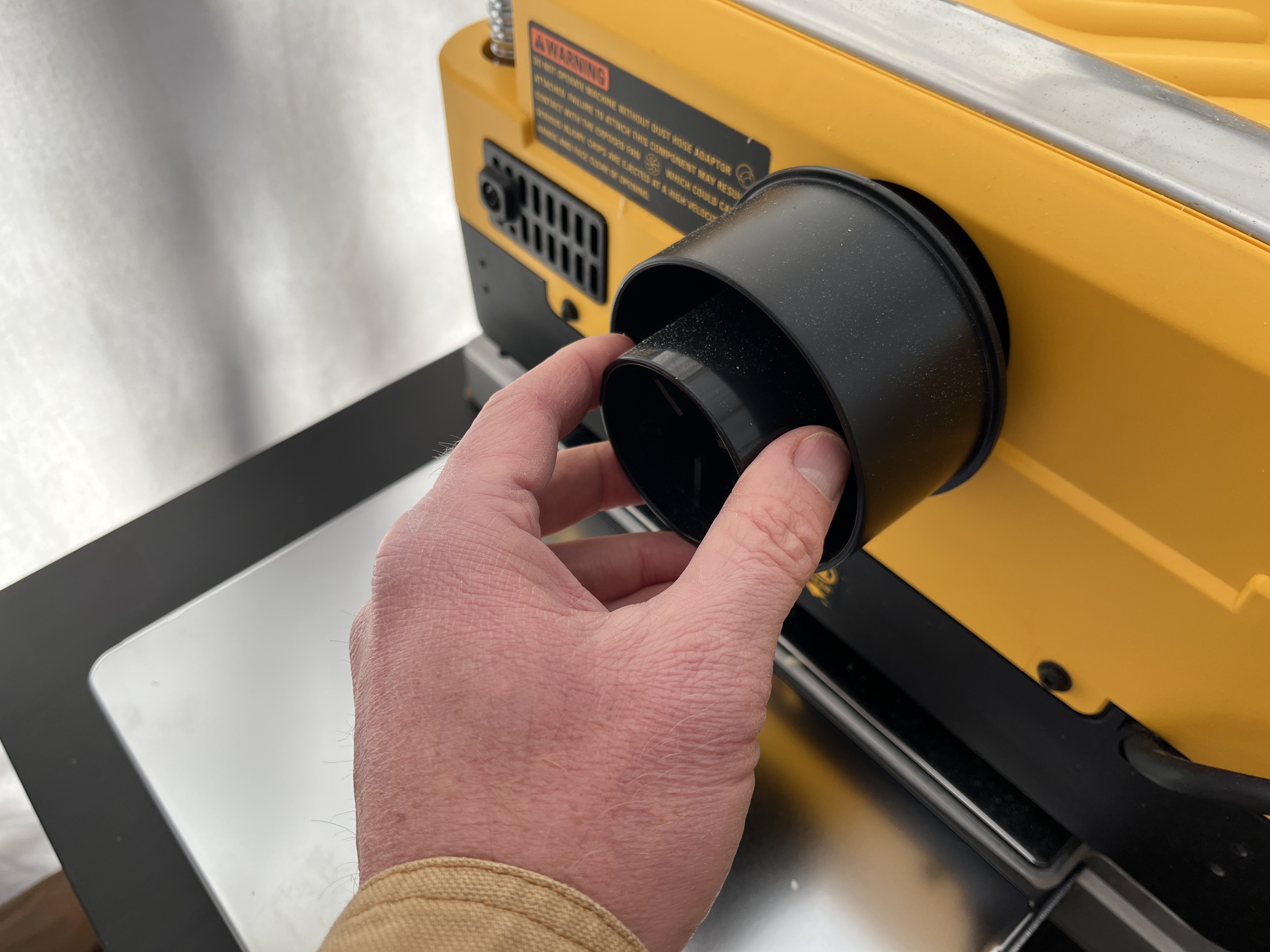
I had minimal experience with thickness planers before I got the DeWalt DW735. I had borrowed one a couple of times, but was not proficient. I spent the evening after it arrived setting it up and reading the owner’s manual to make sure I wouldn’t break anything or get injured. Turns out, the biggest risk was that I might throw my back out trying to move it. I recommend getting a helper any time you need to pick this machine up. For shop use, a dedicated planer stand would be a smart addition.
It only took about 15 minutes to set up the planer and assemble the infeed and outfeed tables. I actually purchased the DW735X kit, which is the same machine as the DW735 but includes the infeed/outfeed tables, dust port adapter, and an extra set of knives. The unit is pretty much plug-and-play, but opting for the tool-only unit will require just a bit more setup.
After adjusting the carriage height for my plank, I flipped the switch and sent the piece through. I decided to test the planer outdoors since I don’t have a dust collection system, and I’m glad I did. When I ran the first test piece through I was amazed to see the wood shavings blown up to 20 feet away. The noise level was much louder than I anticipated, so I put on a set of over-ear hearing protectors and kept working. I experimented with different removal thicknesses, tried out the material removal gauge, the thickness selector, and the different feed speeds on a pile of pine and hardwood scrap. Everything worked as expected and there was basically zero learning curve.
Plenty of Cutting Power, Silky Smooth Finish, Consistently Accurate
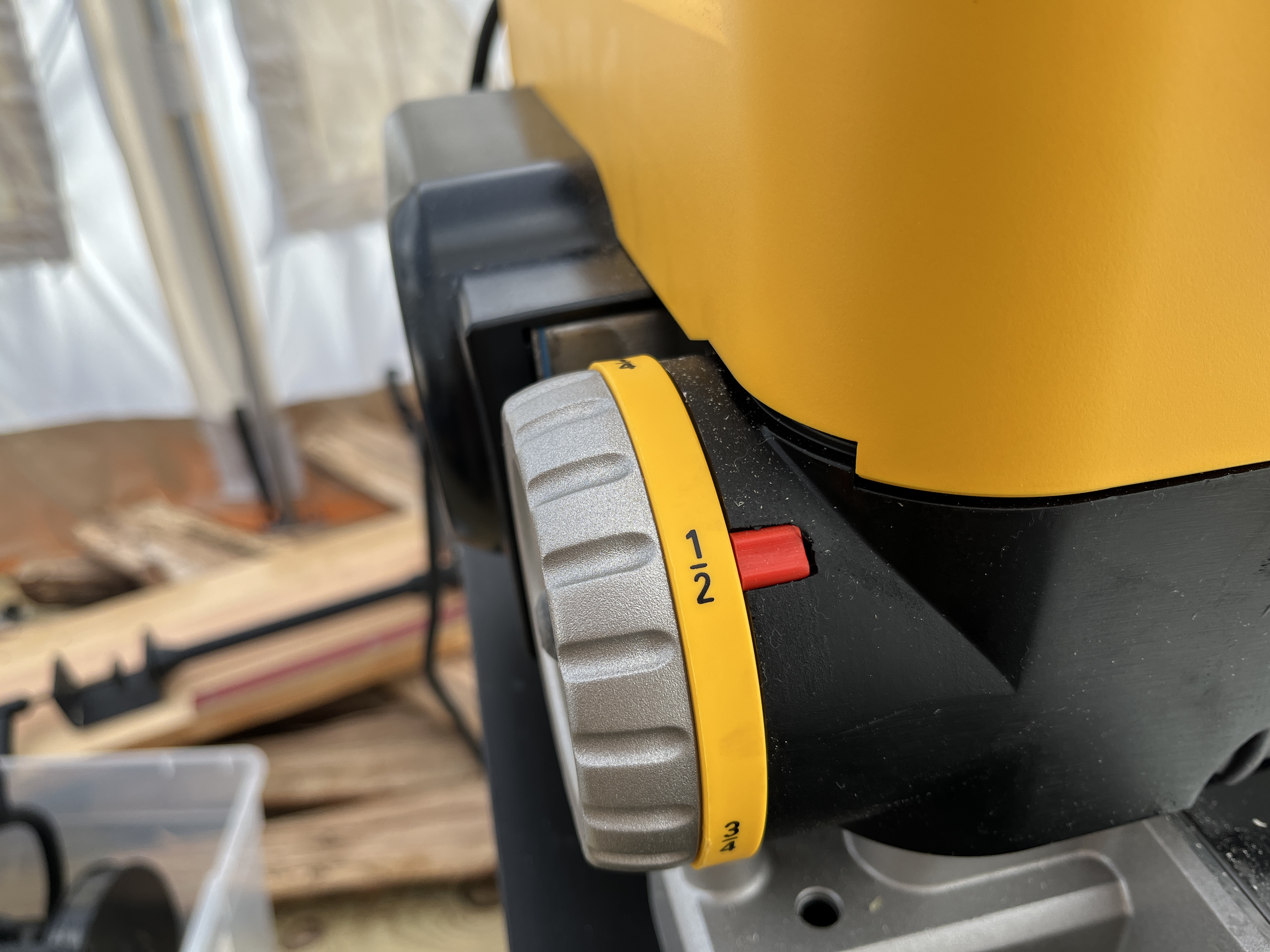
So far I have used the DeWalt Planer DW735 on store-bought poplar and yellow pine lumber, blanks split from an oak log, and various cutoffs and reclaimed boards. I mostly work with pieces that are less than 4 feet long. It has delivered excellent results on everything I have fed it. Neither the feed rate nor the cutting speed seems to be affected by the hardness of the wood. Hardwood, softwood, fresh and sappy or old and dried boards, the finished faces always come out clean and smooth. Thickness accuracy has been pretty much perfect too, although it does produce a bit of snipe.
Snipe is a ubiquitous issue with benchtop planers. The snipe section averages about 15 thousandths of an inch, measured with a digital caliper, and runs about 3 inches back from the board end. Raising the infeed-outfeed tables a bit has helped, but the best solution I found was to either run longer boards and cut off the snipe, or send a sacrificial board through just ahead of the good board.
The DW735 has a maximum planing depth of ⅛ inch. I usually plane no more than 1/16 inch at a time, often as little as 1/32 inch. The owner’s manual cautions against planing the maximum depth on 13-inch wide boards due to the strain it would place on the motor. In order to provide a full review, I did test the maximum depth on 8-inch-wide lumber. On the nearly flat surface, the full-depth cut seemed (audibly) to strain the motor some, but it did not affect the feed rate or the appearance of the finished surface.
Why I Think the DeWalt DW735 Planer Is Worth Every Penny

I am a firm believer in “buy it once, use it forever,” and the DeWalt DW735 feels like that kind of tool. Based on 2 months of fairly intensive hobby-level use, it has done everything I’ve needed exceedingly well. The blades have remained sharp, the cutter and carriage structure is perfectly sturdy and still exactly square with the feed table. The adjustment mechanisms are dead-on reliable. Just as importantly, it comes from a highly-regarded, time-tested brand that also has an excellent track record for product support. When I eventually need replacement blades, I don’t have to worry whether or not I’ll be able to get them. I think that the price is fair for that level of performance and peace of mind.
Buy the DeWalt 735 Planer on:
- Amazon for $599.00
- Lowe’s for $599.00
- The Home Depot for $599.00
- Rockler for $599.00 (with extra knives and infeed/outfeed table)
- Byrd Tool for $1,695 (with Shelix helical 40-insert cutterhead upgrade)
Product Comparisons
| DeWalt Planer DW735 | Grizzly Planer G0940 | Hercules Portable Planer | Craftsman Benchtop Planer | Oliver Machinery 10045 Planer | |
| Motor | 15-amp | 15-amp | 15-amp | 15-amp | 15-amp |
| Cutterhead | Three-knife, 10,000 RPM | 30-insert helical, 8,500 RPM | Three-knife, 9,700 RPM | Two-knife, 8,000 RPM | 36-insert helical, 10,000 RPM |
| Maximum width | 13 inches | 13 inches | 12.5 inches | 12.25 inches | 13 inches |
| Maximum thickness | 6 inches | 6 inches | 6 inches | 6 inches | 6 inches |
| Feed rate | Two-speed 14 FPM or 26 FPM | 25 FPM | 25.3 FPM | 26.2 FPM | Two-speed 17 FPM or 26 FPM |
| Price | $599.00 | $870.00 | $399.99 | $349.00 | $999.99 |
So, is the DeWalt Planer DW735 right for you?
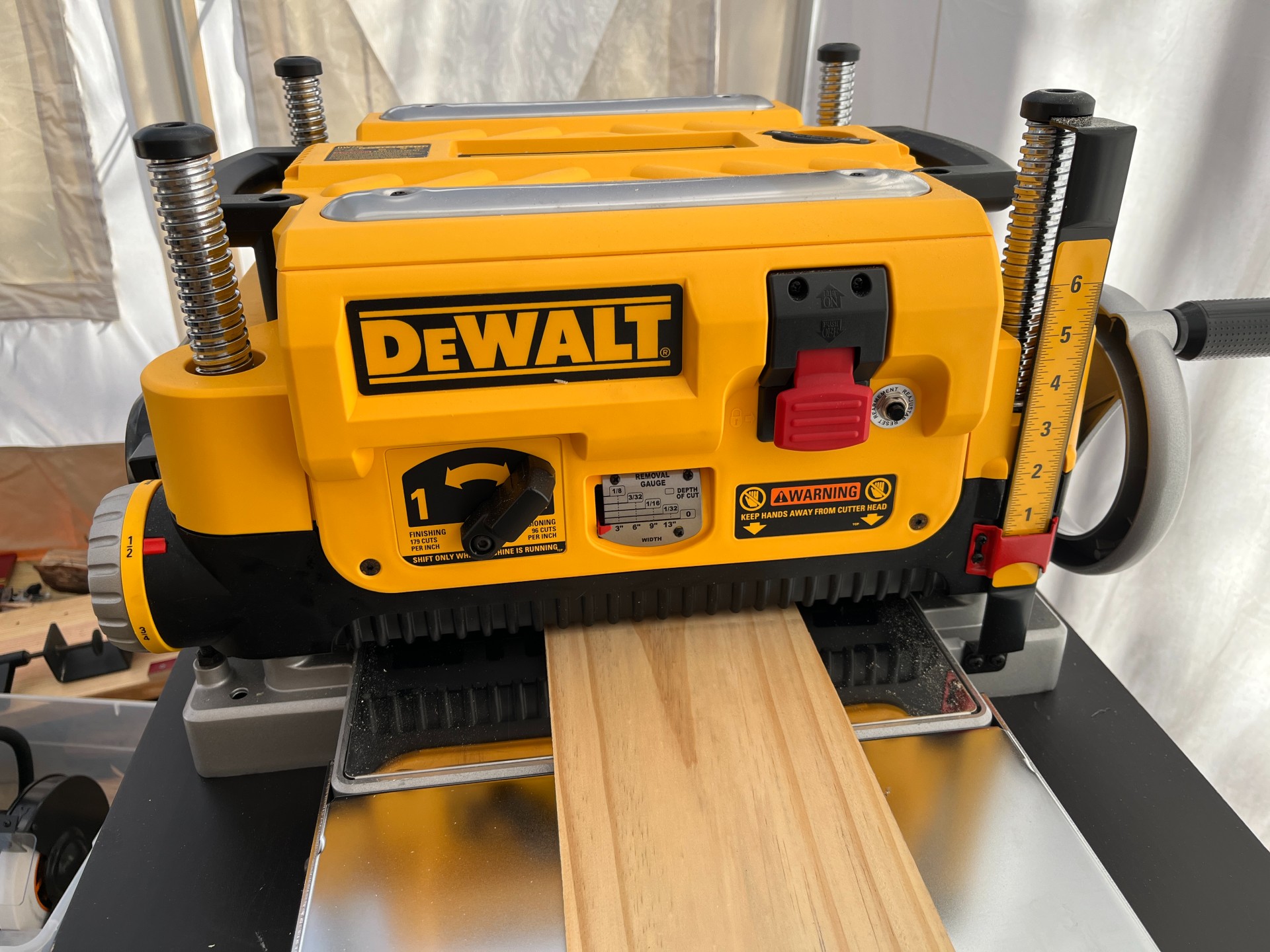
A power planer can be a big help in the wood shop. Flattening and choosing custom-thickness for rough-cut boards is far less expensive than buying sanded-four-sides (S4S) project lumber at a retail store. Your shop-planed boards will be more consistent than those at the store, and it gives the option to use wood from other sources, like local sawmills or your own logs. A planer also allows for flattening multiple-board panels after gluing them together.
Not every workshop needs a thickness planer. Other workarounds can suffice until buying one is necessary or fits into the budget. If it’s time to buy a benchtop planer, the DeWalt 735 is one of the best options available. The DW735 is not the cheapest or most expensive option, but it offers outstanding performance for the price, and is backed by a support network that offers replacement knives and other parts and accessories to keep it in top condition. You’ll get the best value from the DW735X kit, which includes the infeed/outfeed tables, or for the smoothest possible finish and extra-long cutter life, it is available with the Byrd Tools Shelix upgrade cutterhead pre-installed.
Meet the Tester
Mark Wolfe is a writer, product tester and serial DIYer who lives in an older home. When he isn’t writing, he spends his time upgrading, repairing, and replacing anything and everything in his home, yard, and garden. He tests and writes reviews about hand and power tools, lawn care and home repair products, and outdoor living goods.
